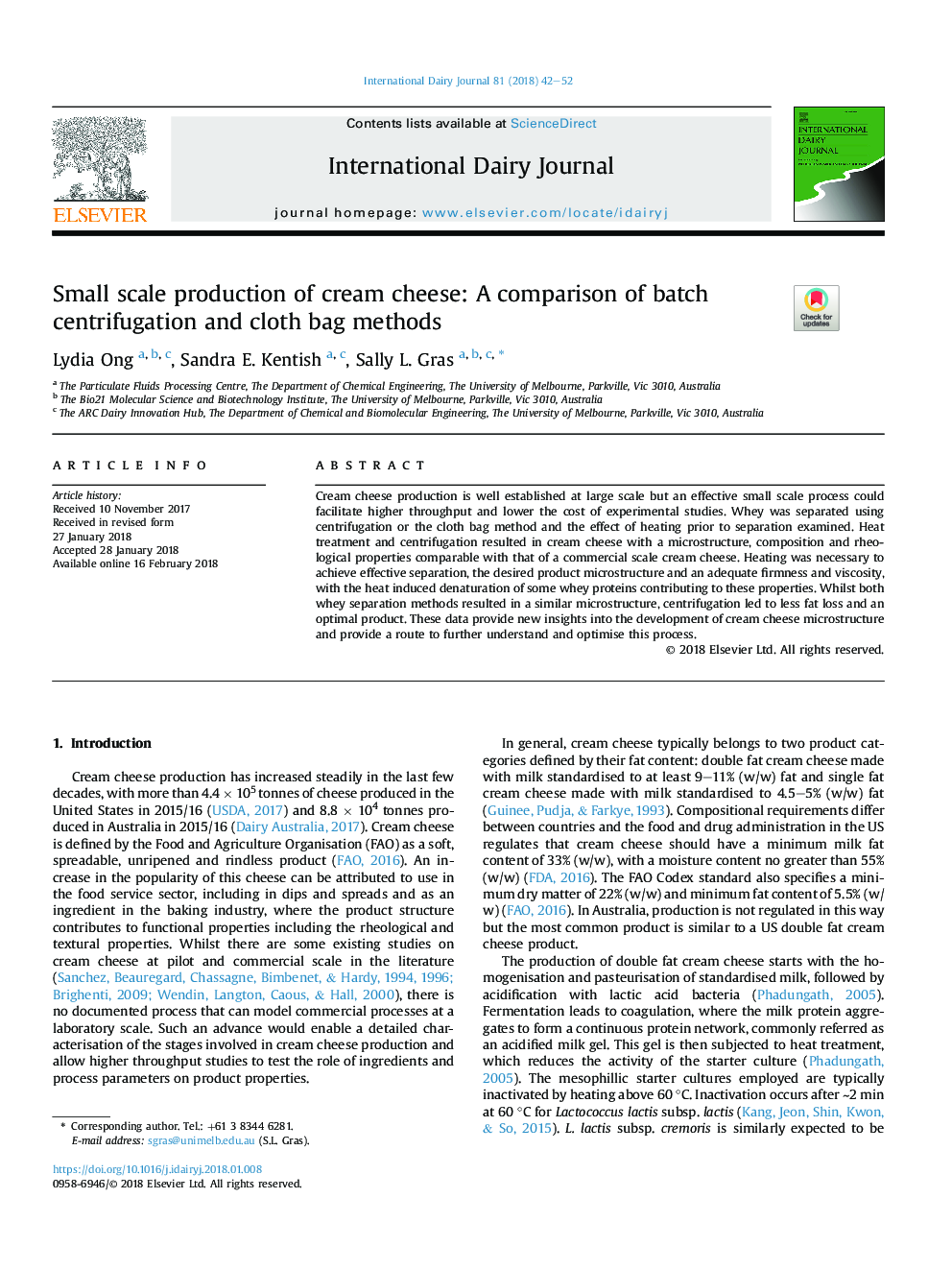| Article ID | Journal | Published Year | Pages | File Type |
|---|---|---|---|---|
| 8499839 | International Dairy Journal | 2018 | 11 Pages |
Abstract
Cream cheese production is well established at large scale but an effective small scale process could facilitate higher throughput and lower the cost of experimental studies. Whey was separated using centrifugation or the cloth bag method and the effect of heating prior to separation examined. Heat treatment and centrifugation resulted in cream cheese with a microstructure, composition and rheological properties comparable with that of a commercial scale cream cheese. Heating was necessary to achieve effective separation, the desired product microstructure and an adequate firmness and viscosity, with the heat induced denaturation of some whey proteins contributing to these properties. Whilst both whey separation methods resulted in a similar microstructure, centrifugation led to less fat loss and an optimal product. These data provide new insights into the development of cream cheese microstructure and provide a route to further understand and optimise this process.
Related Topics
Life Sciences
Agricultural and Biological Sciences
Food Science
Authors
Lydia Ong, Sandra E. Kentish, Sally L. Gras,
